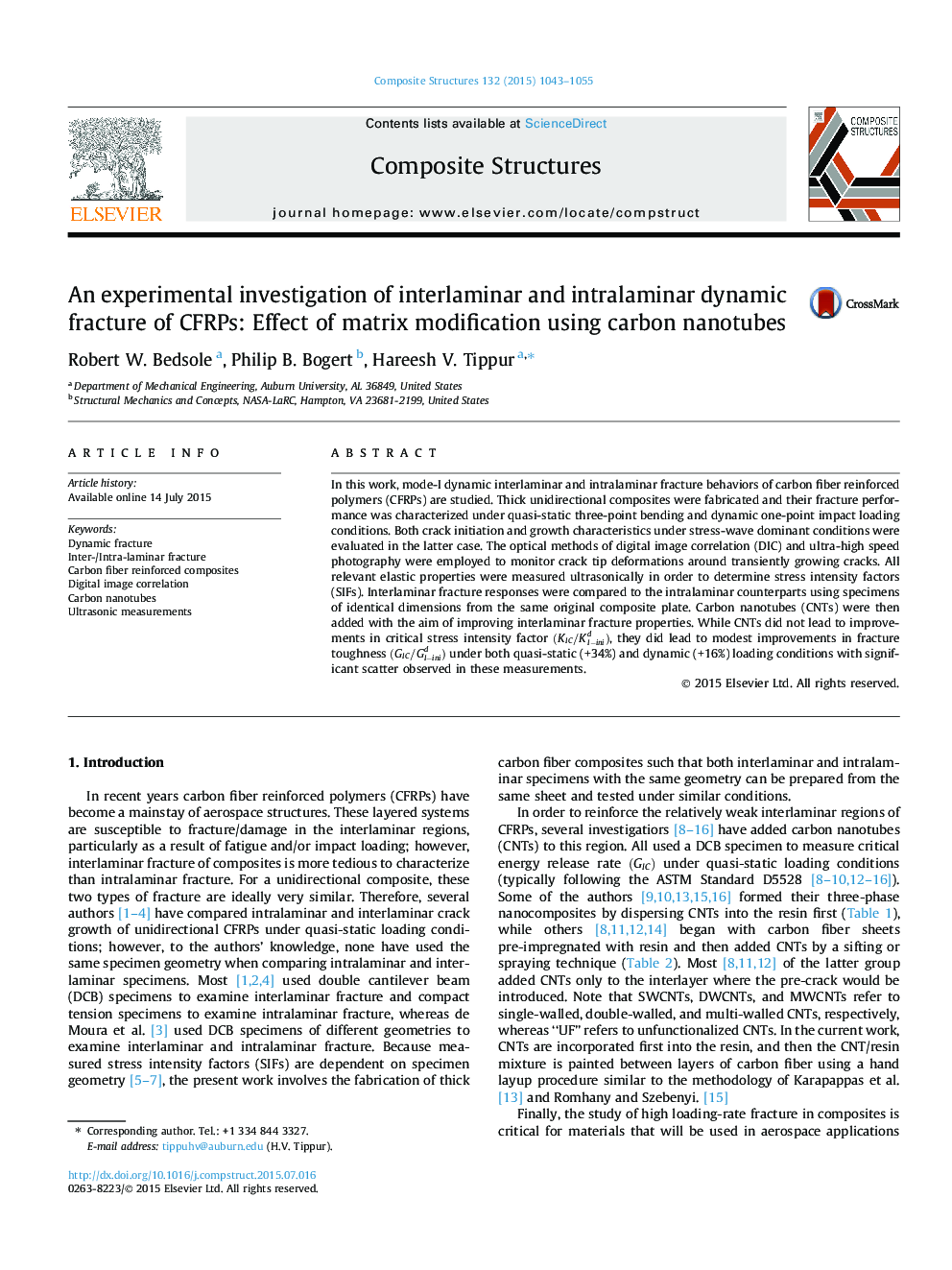| Article ID | Journal | Published Year | Pages | File Type |
|---|---|---|---|---|
| 251150 | Composite Structures | 2015 | 13 Pages |
In this work, mode-I dynamic interlaminar and intralaminar fracture behaviors of carbon fiber reinforced polymers (CFRPs) are studied. Thick unidirectional composites were fabricated and their fracture performance was characterized under quasi-static three-point bending and dynamic one-point impact loading conditions. Both crack initiation and growth characteristics under stress-wave dominant conditions were evaluated in the latter case. The optical methods of digital image correlation (DIC) and ultra-high speed photography were employed to monitor crack tip deformations around transiently growing cracks. All relevant elastic properties were measured ultrasonically in order to determine stress intensity factors (SIFs). Interlaminar fracture responses were compared to the intralaminar counterparts using specimens of identical dimensions from the same original composite plate. Carbon nanotubes (CNTs) were then added with the aim of improving interlaminar fracture properties. While CNTs did not lead to improvements in critical stress intensity factor (KIC/KI-inid), they did lead to modest improvements in fracture toughness (GIC/GI-inid) under both quasi-static (+34%) and dynamic (+16%) loading conditions with significant scatter observed in these measurements.
